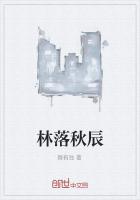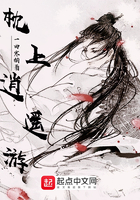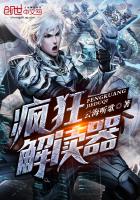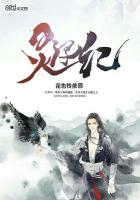富兰克林一生中的重大事件:
(包括本杰明·富兰克林在富兰克林学院的生活)
1自传只记录到1757年,还有许多重要的事实没有记录。因此,把本杰明·富兰克林一生中的那些主要事件记录下来是很明智的。下面就是事件列表:
1706出生于波士顿,并且在南部的老教堂里受洗。
1714进语法学校学习。
1716中断学业,帮助父亲工作。
1718开始成为其兄詹姆士的学徒,从事印刷业。
1721开始写短诗并且匿名向《新英格兰报》投稿,并做过该报临时编辑。成为一名自由主义者和素食者。
1723撕毁学徒契约,前往费城,在凯默印刷所当印刷工,放弃素食主义。
1724被基思州长说服为独立开业赴伦敦,并且在那里工作,当印刷工;发表论文《论自由与贫困,快乐与痛苦》。
1726返回费城,先当干货铺店员,后当凯默印刷所的工头。
1727创办“讲读俱乐部”,研究社会科学、自然科学的各种问题。
1728和休·梅雷迪思合开印刷所。
1729创办《宾西法尼亚报》;开办文具店;出版《试论纸币的性质和必要性》。
1730和黛博勒·里德结婚。
1731创办费城图书馆。
1732以笔名理查德出版《穷理查德历书》创刊号。这本历书,包含了他25年的人生智慧,它在美国人的性格建构过程中起了很重要的作用,它把美国人紧紧地团结在一起,尽管美国人的性格和文化如此多样化。
1733开始自学法语、意大利语、西班牙语和拉丁语。
1736担任宾西法尼亚州议会文书;组建费城联合消防队。
1737就任费城邮政局长;改革费城警务。
1742年发明富兰克林“开炉”。
1743建议成立大学,这个建议后来被采纳成立了宾西法尼亚大学。
1744创办“美洲哲学学会”。
1746发表《平凡的真理》,组建费城的国民自卫队,开始电学实验。
1748改印刷所为合伙经营;当选宾西法尼亚州议会议员。
1749任印第安商贸委员。
1751帮助创办费城医院。
1752作闪电传蓄试验——费城电风筝试验。
1753因电学研究成果获英国皇家学会的科普利金质奖,被推举为皇家学会会员;被耶鲁大学、哈佛大学授予硕士学位;与他人合任北美邮政总代理。
1754作为宾西法尼亚州代表出席在奥尔巴尼召开的殖民地代表会议,提出著名的“奥尔巴尼联盟计划”。
1755典当自己的财产以供给布纳德多克的军队;获的议会批准帮助皇家远征军;建立费城国民自卫军,任指挥官。
1757在议会提案铺设费城街道;发表《致富之路》;作为宾西法尼亚州议会代表赴英请愿,反对业主在殖民地的免税特权,享受和英国本土的同等自由。
2(以下为自传后篇)
1760通过努力使英国王室枢密院决定,殖民地业主的产业必须同样纳税。
1762发明玻璃琴,流行欧美数十年;被牛津大学和爱丁堡大学授予民法博士学位;返回北美。
1763开始为期五个月的巡视北部殖民地邮政之旅,开始改革邮政。
1764在宾西法尼亚州议会选举中败于激进派;作为宾西法尼亚州议会代理人赴英请愿,反对业主劣政。
1765年,反对印化税法案。
1766在英国下院为废止印花税事答辩;任马萨诸塞,新泽西,乔治亚州的代表;出访哥大。
1767初次旅法,受法王接见。
1769获哈佛大学观察员称号。
1772当选法兰西皇家科学院“外国会员”。
1774被解除北美邮政总代理之职;结识并介绍托马斯o潘恩赴美。
1775返回北美;当选北美殖民地第二次大陆会议代表;建立秘密通信委员会;担任加拿大合作治安委员会委员。
1776参加起草《独立宣言》;当选宾西法尼亚州制宪委员会主席;奉大陆会议派遣出使法国。
1778缔结《美法友好通商条约》和《美法同盟条约》。
1779受命任驻法全权大使。
1780成为波士顿的“美洲科学艺术学会”会员。
1782签署和约预备文件。
1783英美缔结《巴黎和约》。
1785返美;当选宾西法尼亚州州长,1786连任。
1787再次当选宾西法尼亚州州长参加联邦宪法会议,促成宪法通过。
1788退出政治生活。
1790逝世于费城(4月17日)。他的坟墓就在第五大道的费城教堂墓地。
Events in Franklin's Life
(See also: The Life and Times of Benjamin Franklin at The Franklin Institute)
1Ending, as it does, with the year 1757, the autobiography leaves important facts un-recorded. It has seemed advisable, therefore, to detail the chief events in Franklin's life, from the beginning, in the following list:
1706 He is born, in Boston, and baptized in the Old South Church.
1714 At the age of eight, enters the Grammar School.
1716 Becomes his father's assistant in the tallow-chandlery business.
1718 Apprenticed to his brother James, printer.
1721 Writes ballads and peddles them, in printed form, in the streets; contributes, anonymously, to the New England Courant, and temporarily edits that paper; becomes a free-thinker, and a vegetarian.
1723 Breaks his indenture and removes to Philadelphia; obtaining employment in Keimer's printing-office; abandons vegetarianism.
1724 Is persuaded by Governor Keith to establish himself independently, and goes to London to buy type; works at his trade there, and publishes "Dissertation on Liberty and Necessity, Pleasure and Pain."
1726 Returns to Philadelphia; after serving as clerk in a dry goods store, becomes manager of Keimer's printing-house.
1727 Founds the Junto, or "Leathern Apron" Club.
1728 With Hugh Meredith, opens a printing-office.
1729 Becomes proprietor & editor of Pennsylvania Gazette; prints, anonymously, "Nature and Necessity of a Paper Currency"; opens a stationer's shop.
1730 Marries Deborah Read.
1731 Founds the Philadelphia Library.
1732 Publishes the first number of Poor Richard's Almanac under the pseudonym of "Richard Saunders." The Almanac, which continued for twenty-five years to contain his witty, worldly-wise sayings, played a very large part in bringing together and molding the American character which was at that time made up of so many diverse and scattered types.
1733 Begins to study French, Italian, Spanish, and Latin.
1736 Chosen clerk of the General Assembly; forms the Union Fire Company of Philadelphia.
1737 Elected to the Assembly; appointed Deputy Postmaster-General; plans a city police.
1742 Invents the open, or "Franklin," stove.
1743 Proposes a plan for an Academy, which is adopted 1749 and develops into the University of Pennsylvania.
1744 Establishes the American Philosophical Society.
1746 Publishes a pamphlet, "Plain Truth," on the necessity for disciplined defense, and forms a military company; begins electrical experiments.
1748 Sells out his printing business; is appointed on the Commission of the Peace, chosen to the Common Council, and to the Assembly.
1749 Appointed a Commissioner to trade with the Indians.
1751 Aids in founding a hospital.
1752 Experiments with a kite and discovers that lightning is an electrical discharge.
1753 Awarded the Copley medal for this discovery, and elected a member of the Royal Society; receives the degree of M.A. from Yale and Harvard. Appointed joint Postmaster-General.
1754 Appointed one of the Commissioners from Pennsylvania to the Colonial Congress at Albany; proposes a plan for the union of the colonies.
1755 Pledges his personal property in order that supplies may be raised for Braddock's army; obtains a grant from the Assembly in aid of the Crown Point expedition; carries through a bill establishing a voluntary militia; is appointed Colonel, and takes the field.
1757 Introduces a bill in the Assembly for paving the streets of Philadelphia; publishes his famous "Way to Wealth"; goes to England to plead the cause of the Assembly against the Proprietaries; remains as agent for Pennsylvania; enjoys the friendship of the scientific and literary men of the kingdom.
2(HERE THE AUTOBIOGRAPHY BREAKS OFF)
1760 Secures from the Privy Council, by a compromise, a decision obliging the Proprietary estates to contribute to the public revenue.
1762 Receives the degree of LL.D. from Oxford and Edinburgh; returns to America.
1763 Makes a five months' tour of the northern colonies for the purpose of inspecting the post-offices
1764 Defeated by the Penn faction for reelection to the Assembly; sent to England as agent for Pennsylvania.
1765 Endeavors to prevent the passage of the Stamp Act.
1766 Examined before the House of Commons relative to the passage of the Stamp Act; appointed agent of Massachusetts, New Jersey, and Georgia; visits Gottingen University.
1767 Travels in France and is presented at court.
1769 Procures a telescope for Harvard College.
1772 Elected Associe Etranger of the French Academy.
1774 Dismissed from the office of Postmaster-General; influences Thomas Paine to emigrate to America.
1775 Returns to America; chosen a delegate to the Second Continental Congress; placed on the committee of secret correspondence; appointed one of the commissioners to secure the cooperation of Canada.
1776 Placed on the committee to draft a Declaration of Independence; chosen president of the Constitutional Committee of Pennsylvania; sent to France as agent of the colonies.
1778 Concludes treaties of defensive alliance, and of amity and commerce; is received at court.
1779 Appointed Minister Plenipotentiary to France.
1780 Appoints Paul Jones commander of the "Alliance."
1782 Signs the preliminary articles of peace.
1783 Signs the definite treaty of peace.
1785 Returns to America; is chosen President of Pennsylvania; reelected 1786.
1787 Reelected President; sent as delegate to the convention for framing a Federal Constitution.
1788 Retires from public life.
1790 Dies April 17. His grave is in the churchyard at Fifth and Arch streets, Philadelphia.















